There are not as few pests in potatoes as it might seem at first glance. But most of them are polyphagous insects that damage a wide range of cultivated and wild plants, including potatoes.The article provides recommendations for effective control of these pests, as well as preventive measures that will help prevent the appearance of uninvited “guests”.
| Content:
|
Colorado beetle
|
The most common pest of potatoes and other nightshade crops. |
Nature of damage
Beetles and larvae are extremely voracious. They eat the leaves, leaving only thick veins and stems. Photosynthesis of severely damaged tops stops and the plant dies. There can be up to several dozen larvae on one bush. Having eaten one bush, they move to another. The larvae can destroy the entire plot in a few days.
Pest control measures
When larvae and eggs cannot be collected manually, insecticides are used.
- Usually used Aktar, Iskra. Treatment is carried out when pests appear at intervals of 10-14 days.
- Prestige very good for prevention. When treating plots with it, pests do not appear. If larvae appear in a potato field, they die after treatment with Prestige and do not appear again.
- Biological products Fitoverm and Bitoxibacillin. The drugs act on larvae and do not affect eggs. Treatments are carried out when the pest appears every 7-10 days. The disadvantage of biological products is their slow effect on beetles and larvae. The effect occurs within 24-36 hours. Until then, the pests continue to feed, although not as actively. Biological products should be used for minor field damage and if it is not possible to collect the larvae manually.
- Sonnet. It destroys not individual specimens, but the population itself. The substance included in the preparation destroys the chitinous cover of beetles and sterilizes the eggs. The wings of the beetles are destroyed, and the larvae do not grow back. Insects cannot mate and, accordingly, reproduce. In addition, the eggs laid are infertile and larvae do not hatch from them.
|
All treatments are carried out on both the lower and upper sides of the leaf, since oviposition and younger larvae feed on the underside. |
Folk remedies
- Manual collection of larvae. In recent years, the number of pests in the Central region has decreased significantly, and it is easier to collect them by hand than to spray them.
- In the south, the number of insects is much greater, and they damage not only potatoes, but also tomatoes and eggplants. If possible, the larvae are collected by hand; if not, they are sprayed. No infusions will help against this pest.
- Those who keep guinea fowl often train them to eat larvae. To do this, larvae are added to their food, thus teaching the birds to feed on them. Gradually, they begin to independently search for and eat the pest.
Prevention
A good effect is obtained by soaking the tubers in Prestige solution before planting. The number of insects decreases by 2.5-3 times. In the middle zone, in some years after treatment with the drug, the Colorado potato beetle did not appear on the potato plot.
Golden potato nematode
|
Nematodes are small, transparent worms that are almost invisible to the naked eye. They cause enormous damage to potatoes. The source of infection is planting material, soil, and plant residues. |
Nature of damage
Roots and tubers are damaged. Sometimes, it parasitizes stems (stem nematode).The defeat is very difficult to notice, because once external signs appear, the potatoes cannot be saved.
The bushes begin to lag significantly in growth, the lower leaves die off, and the rest turn yellow for no apparent reason. The shoots are deformed and crushed. When the stem is damaged, swellings appear on the lower part. The buds and flowers are tiny, and with severe damage, budding and flowering are absent. Potato yields decrease sharply; with good seed material, the tubers are small, often unripe, and poorly stored.
Affected tubers can be seen during storage. Dark spots appear on them, slightly pressed into the skin, reminiscent of dry rot. The spots go deep into the pulp, are shaped like passages and have a clear border with healthy tissue. Gradually, the fabric cracks and white dots can be seen in the cracks - an accumulation of nematodes.
In winter, nematodes come to the surface of the tuber and turn into a cyst. Small tubercles resembling poppy seeds appear on the peel - these are cysts. The pest can survive in this state for up to 10 years.
Potatoes damaged by nematodes are more often affected by diseases.
How to fight nematodes
The nematode is a quarantine pest in Russia, so it is found on garden plots only when using seed material of unknown origin.
- When apparently healthy bushes turn yellow, they are removed along with roots and tubers. The area is sprinkled with bleach.
- When “poppy” appears on the planting material, the seed material is destroyed.
- Insecticides have no effect on the pest; special preparations, nematicides, are used to combat it. The most effective fumigates are those that emit gas that penetrates the skin of the pest and leads to its death. Very good drug Force. Place into holes when planting. At the same time, it protects potatoes from wireworms and beetles. Fumigates include Nemagon, Chloropicrin (toxic with a pungent suffocating odor). But they are used only in large agricultural enterprises and are very difficult to obtain.
- Contact pesticides are used Vidat. It is brought into the hole when planting. The drug destroys the pest as it emerges from the cyst.
Currently, many varieties have appeared that are partially resistant to the nematode: Gala, Vineta, Burnovsky, Russian Beauty, etc. No completely resistant varieties have been developed yet.
|
Since the nematode is a quarantine pest, all medications for it are practically inaccessible to ordinary summer residents. |
Folk remedies
If you suspect the appearance of this pest on the site, the plot before planting is spilled with boiling water 2 times with an interval of 3-4 days.
Prevention
Before planting, all doubtful tubers are discarded.
Wireworm
|
A widespread pest of root crops, and especially potatoes. Roots and tubers are damaged. Yield loss is 30-50%. The wireworm is a small, yellow, tough worm, the larva of the click beetle. |
Nature of damage
The wireworm bores into the tubers to varying depths from 0.5 to 6 cm. The damage from the larvae is more pronounced in the second half of summer, when tuberization begins. On young tubers, wounds heal and are revealed by small irregularities in the peel or when peeling potatoes. On formed tubers, the holes do not close and holes remain on the potatoes.
Adult larvae can gnaw through the tuber. Harmfulness is higher in dry weather. With a relatively small number of pests (5-7 individuals per m2) during drought, up to 60-70% of tubers are damaged.In wet weather the rate drops sharply. Damaged potatoes have a worse shelf life and are more likely to rot.
|
If the pest population is high, roots and young tops may be damaged. The wireworm eats roots and stolons. Older larvae can bore into the stem. As a result, the seedlings thin out and the bush begins to lag in growth. |
Protecting potatoes from wireworms
The preparations are usually applied to the hole when planting potatoes.
- Force. Fumigate. When decomposed in the soil, it releases gases that penetrate the integument of the larva and lead to its death. The pest does not have time to cause damage.
- Bazudin. Enteric contact insecticide. Causes paralysis of larvae when eating potatoes. Added upon planting. When there is a high concentration of the pest or in dry weather, watering is carried out on the boletus. The drug has an unpleasant odor.
- Provotox. Place it in the hole when planting. Has a long-lasting protective effect.
- Matador. Treat the seeds the day before planting. Does not accumulate in tubers. Compatible with fungicides and growth regulators.
- Nemabact (Ztonem). A biological product from one manufacturer, produced under different brands. It is a symbiosis of a bacterium and a predatory nematode. The nematode bites into the host's body and causes its death.
The pest actively spreads when wheatgrass appears in the area. Therefore, the potato field must be free of weeds.
Folk remedies
- Collecting and destroying wireworms manually when digging.
- Adding coarsely ground eggshells into the hole when planting. Although the worm is very tough, the shell will repel it. Instead, you can use crushed nut shells or seed husks.
|
These are the types of damage left on tubers after wireworms |
Prevention consists of exterminating weeds, especially wheatgrass, and adding onion peels to the holes. Potatoes are watered regularly in dry weather. With sufficient humidity, the wireworm is not as active and damages the potatoes less.
Khrushchi
|
Khrushchi are thick, white, extremely voracious larvae of the cockchafer. |
Nature of damage
The larvae gnaw deep cavities in potatoes. Older larvae are able to completely eat the tuber. Damaged potatoes are severely affected by rot and cannot be stored.
How to deal with Khrushchev
You can use all drugs to combat wireworms.
- Antikhrushch. Water the holes before planting. You can soak the seeds for 10 minutes in the drug solution.
- Terradox. The drug against all types of soil pests. Granules are applied to the soil during planting. When the hogweed spreads during the growing season, the drug is scattered under the tops and high hilling of the boletus is carried out. Analogues are Bazudin, Pochin.
|
If, when digging the soil, at least one beetle was found, the application of preparations is mandatory, otherwise you may be left without a harvest. |
Folk remedies
Manual collection of larvae during digging. If the bush died and the cause of death was Khrushchev, then several potatoes, cut in half, are placed in this hole. Every other day they dig up and collect pests. But it should be noted that this method is very labor-intensive and ineffective, since along with the bait, other plants are also damaged.
|
Tuber eaten by Khrushchev |
Prevention
- Since the beetle is the larva of the cockchafer, during the summer of the beetles they are caught in mid-May.
- During the day, the beetles are inactive, so they are shaken off the trees, collected and destroyed.
- In May, the trees in the garden are treated with Aktara and Prestige.This disinfects the garden both from pests of fruit trees and from the cockchafer.
Medvedka
|
A very widespread pest, however, it damages potatoes only in wet, low-lying or irrigated fields. |
Nature of damage
Damages tops, roots and tubers. It gnaws roots and stems at any phase of crop development. In tubers, the insect eats away large, irregularly shaped cavities. Eats roots and stolons. Damages the lower part of the stem by gnawing it. The tops die and plants fall out. A damaged plant is easily pulled out of the soil.
Fighting a mole cricket
The same drugs are used as for wireworms and beetles. They also use the drugs Grizzly, Medvetox, Rubezh, Grom. All of them are introduced into the hole during planting.
Folk remedies
To kill insects in the fall, holes are made in the field 50-60 cm deep and filled with half-rotted manure (preferably horse manure, since it generates more heat). The hole is marked with a peg. The mole cricket will definitely make a nest here. In late autumn or early spring, as soon as the snow melts, a hole is dug out and insects and their offspring are destroyed.
|
The mole cricket feeds not only on plant roots, but also on worms (including wireworms) and insects, so, in a sense, it, until a certain time, clears the area of soil pests. But, unfortunately, it itself causes no less harm to plants. |
For catching, baits from fermenting drinks are used. A bottle of kvass or beer is dug in at the soil level at an angle. After some time, the bottle is dug up along with the insects that got into it.
Finely ground shells are added to the wells. The voracious mole cricket eats it and dies.
Prevention
Do not over-water the potato field.When the soil is dry, the insect migrates in search of wetter habitats.
Potato aphid
|
It affects potatoes throughout the country, except in polar regions with very short summers. |
Nature of damage
Aphids settle on the underside of leaves and suck the juice from them. When feeding, it secretes a sweet, sticky liquid that attracts ants. When attacked by insects, the leaves become corrugated, pimply, and curl downward, but not completely. Plants are stunted, flowers are small, flowering is unfriendly. The harvest is smaller than usual.
Honeydew aphids are a good breeding ground for sooty fungus, and with it come other diseases. In addition, aphids are carriers of viral diseases.
Protecting potatoes from aphids
Aphids are very affectionate. Once it appears on potatoes, it will appear there again and again, despite its seemingly complete destruction during processing.
Use drugs Aktara, Karbofos (Fufanon), Iskra, Imidor, Commander, Taboo.
If aphids use natural enemies a little - ladybirds and lacewings. Although they do not completely destroy aphids, they control the number of the pest. The remains of the feast can be removed manually by tearing off the leaves.
It is not recommended to crush aphids on the plant, since they leave behind black dots and spots, and the leaf gradually dries out.
Folk remedies
Aphids have very delicate integuments, so they can be easily dealt with using stinging solutions.
- Soda solution. 1 tbsp. with a slide of soda per 1 liter of water. Spraying is carried out from the bottom side.
- Iodine solution 5% 25 ml of iodine (sold in a pharmacy) are diluted in 5 liters of water. Spray in cloudy weather.
- Infusion of tobacco. 400 g of shag or tobacco per 1 liter of water. Spray on the underside of leaves in cloudy weather.
Spraying is carried out throughout the growing season with an interval of 10 days.
Prevention
Keep the plot clear of weeds. Release ladybugs into the field.
Potato scoop
|
An omnivorous pest that damages about 150 species of cultivated and wild plants. The number of cutworms increases sharply after heavy rains and in wet weather. |
Nature of damage
Caterpillars are dangerous because they gnaw at stems at soil level, gnawing holes in them. Cavities are gnawed out in the tubers without touching the skin around the edges. Caterpillars move quickly from one plant to another.
Damaged stems turn yellow and wither, tubers rot.
How to treat potatoes against cutworms
It is advisable to fight both butterflies and caterpillars.
- To catch butterflies, glue traps are used, placing them around the perimeter of the field or in bogs if the rows have not yet closed.
- When the number of pests is small, potatoes are sprayed with biological preparations Lepidotsid, Actellik, Bitoxibacillin.
- For strong spread, use Iskra, Alatar, Karbofos, Tod.
- To destroy caterpillars in the soil, water the boletus with Bazudin solution. Flying butterflies indicate the presence of caterpillars. If there are butterflies, then there are caterpillars.
In the middle zone, one generation appears per season, but the butterfly’s years last 15-25 days (depending on the weather). Therefore, spraying is carried out twice every 12-14 days, starting from the end of June.
In the south, 2-3 generations appear. The years of butterflies are also extended, but they begin in April. Therefore, treatments begin when seedlings appear and are carried out throughout the growing season. Spraying with insecticides is stopped 15 days before harvesting.
|
Caterpillars are collected by hand. They are large and clearly visible. |
Folk remedies
To catch butterflies, bottles with leftover beer, kvass or kefir are used. They are placed around the perimeter of the field and in the bogs. Later, the butterflies they come across are collected.
Prevention
Removing weeds from the potato field and along its perimeter. Mowing the grass around the perimeter of the site, since the armyworm also lives on weeds.
Onion root mite
|
The pest feeds on vegetable bulbs, flowers and potato tubers. It affects plants both in the field and when stored next to onions and flower bulbs. |
Nature of damage
On potato tubers it causes mite “scab” of tubers. The mite digs into the pulp and sucks out the juice. Brown spots appear on the tubers, which eventually develop zigzag cracks. Next, scab-like crusts appear.
Mites can be found in cracks. The pest settles on tubers damaged during hilling or harvesting. During storage, the mite easily gets on healthy tubers and damages them. Damaged potatoes are unfit for consumption.
When potatoes are damaged in the soil, there are almost no signs on the tops. Sometimes the leaves turn yellow, but this is a nonspecific sign and can easily be confused with the manifestation of some disease. Typically, infection is detected during potato harvesting or storage.
Treating potatoes against mites
The tick is a very serious and dangerous pest. If it appears on the potatoes, it means it is definitely present in the onion bed and at the same time the onions need to be treated.
- Bi-58 top. Insectoacoricide of contact and systemic action. When signs appear on the onions (deformation and white coating on the leaves), spray the onions and potatoes if the onion bed is located next to the potato plot. The treatment is repeated after 12-16 days.
- Tagore. It has a systemic effect and a long-lasting protective effect. Spray once.
- Kinfos. Long-acting systemic drug. Treatment is carried out once during the growing season.
- Sorting tubers during storage and rejecting potatoes with signs of mite “scab”.
- If mites are found in storage, immediately place onions and potatoes in different places. If possible, reduce humidity to 60% and temperature to 1°C.
|
The activity of the mite increases in humid and warm weather, so when a mite appears on the onion, stop watering the potatoes. |
Prevention
- Do not store potatoes, onions and flower bulbs nearby.
- Completely renew planting material.
- Place the potato plot in a different location. If this is not possible, then it is better to give up growing potatoes in the country for 2-3 years. This will save not only potatoes, onions and bulbous flowers, but also other root vegetables, since the tick, due to lack of food, can feed on beets or in a pile of rotting leaves.
- Remove plant debris from the plot.
The mite is an extremely dangerous pest and a delay in processing can destroy potatoes, onions, bulbous flowers, and beets.
Potato flea beetle
|
Adult insects damage the tops, larvae damage the roots. Harmfulness increases in hot and dry weather. |
Nature of damage
Adult beetles feed on leaves, eating holes in them or gnawing through them. Flea beetle larvae feed on small roots. Damages the crop in the first half of the growing season. If the seedlings are severely damaged, they are suppressed. The flea beetle is not so scary for adult plants. The pest itself does not cause much damage, but is a carrier of viral diseases.
Fighting potato flea beetle
Productivity does not suffer from the flea beetle; it usually appears locally on the plot.When they appear, they are treated with Prestige, spraying the tops. It poses a more serious danger when seedlings are damaged, since the growing season of the crop is prolonged. In this case, they are treated with Mospilan, Decis, Confidor.
|
If such holes appear on the leaves of the potato, it means that the potato flea beetle is in charge of your plot. |
Folk remedies
The potatoes are sprayed with flea shampoo for animals, 1 tbsp is diluted in 3 liters of water and treated.
Prevention
Uniform watering of a potato field. Weed control. If the flea beetle damages the seedlings, then planting is carried out as early as possible. Pest activity begins only in June.
Potato moth
In addition to potatoes, it damages other nightshade crops (peppers, tomatoes, eggplants). Found only in the southern regions. In the middle zone and further north, pests die at soil temperatures below -4°C.
|
Quarantine pest. With high numbers, crop losses amount to up to 80%. |
Nature of damage
Damages leaves, stems and tubers. The damage is caused by caterpillars that bore and mine passages in the tops and tubers (mining means living and feeding inside the passage without gnawing through the skin and without coming to the surface). One caterpillar makes 3-4 moves. The caterpillar excrement remains in the passages, and if the leaf or stem is examined well, you can see white lines. The stems above the damage site dry out, cobwebs appear on the leaves, and a purple color appears on the tubers at the site of the caterpillar penetration.
Caterpillars are very active during storage. At this time, their appetite awakens and they become very gluttonous. Since they are active at low positive temperatures, 70-90% of the entire crop is damaged at this time.Moreover, in storage conditions the moth is able to reproduce, so in warm climates it has a continuous development cycle.
How to deal with a pest
Take action immediately if butterflies are noticed or signs of damage appear. The fight against potato moth is complicated by the fact that some insects parasitize inside the plant without coming to the surface. The drugs do not affect caterpillars feeding inside the tubers.
- Spraying the tops with the preparation Bi-58 top. Penetrating into the plant's pathways, it can cause the death of caterpillars feeding inside the tuber.
- Danadim. Process once per season. Systemic, destroys caterpillars inside the tuber.
- Arrivo. Contact-intestinal insecticide. Destroys butterflies and caterpillars on the surface. Does not affect caterpillars feeding inside the plant. Long lasting. It is advisable to use when butterflies begin to fly.
- Todd. Double spraying during the growing season.
- If a pest is detected in the storage, all tubers are soaked in the solution Lepidocida. This is a biological product that has no harmful effect on humans and has a slow but inevitable effect on caterpillars. The death of the pest occurs 2-3 days after treatment. The tubers are kept in the drug solution for 10-15 minutes, then thoroughly dried at 5-6°C and stored. During the winter, 2-3 such treatments can be carried out.
- If the potatoes were affected by moths in the field, then before storing the walls, floor and ceiling of the storage facility, they are treated with the same preparations as the potatoes in the field (Tod, Arrivo, Danadim, Bi-58). Butterflies and caterpillars on the surface die immediately. To kill the caterpillars inside the tubers, they are soaked in Lepidocide.
It is impossible to completely remove the pest from the plot.At the same time as potatoes, other nightshade crops are also processed.
|
Potatoes eaten by potato moths |
Prevention
Difficult, since the moth persists both in the soil and in the storage. The only way is to freeze the storage if possible before storing the crop. And the number of insects is significantly reduced by frost of -4°C. It kills insects and larvae located shallow from the surface. The moth completely freezes out in the middle zone and to the north, so all cases of its appearance here are imported.
Conclusion
All pests do not immediately attack potatoes in one year, and this saves the plantings from complete destruction. In addition, for most polyphagous pests (cutworms, onion mites, aphids, mole crickets), potatoes are still not a priority crop, and they attack it only when there is a shortage of the main food source.
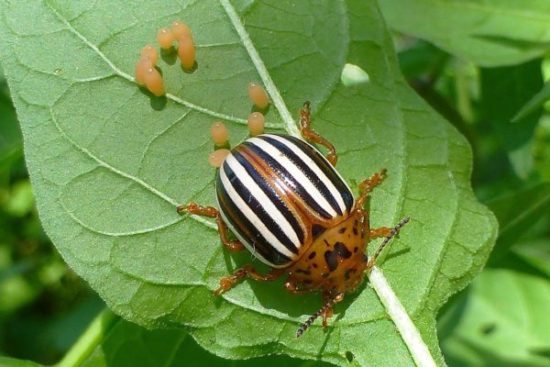
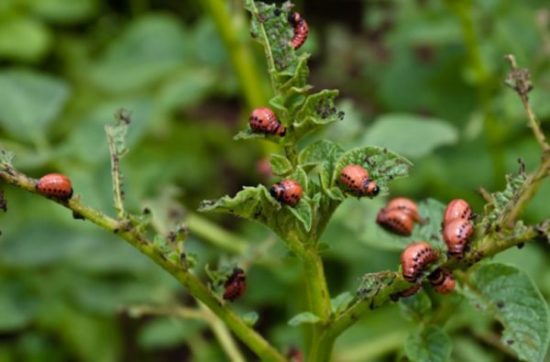
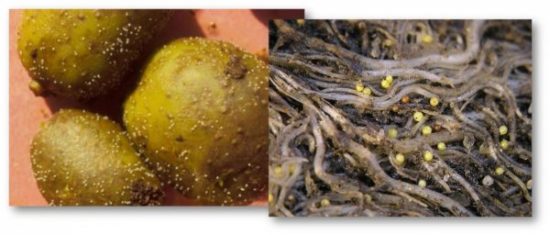
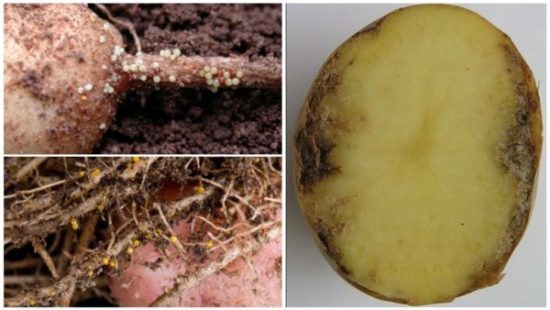
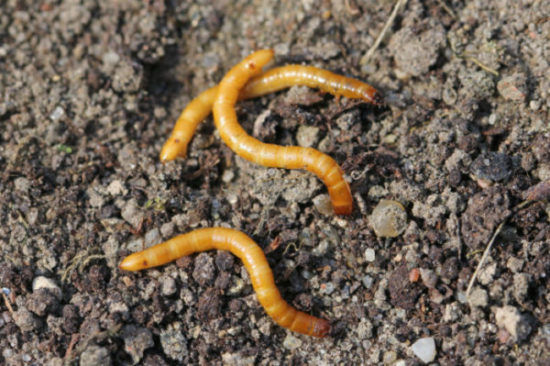
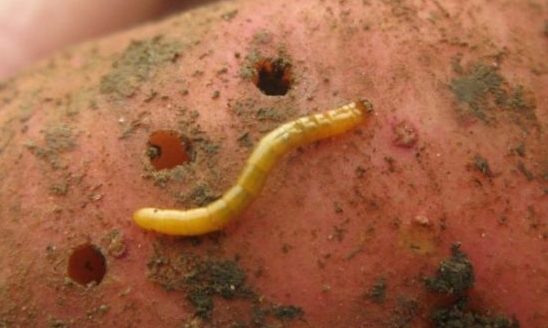
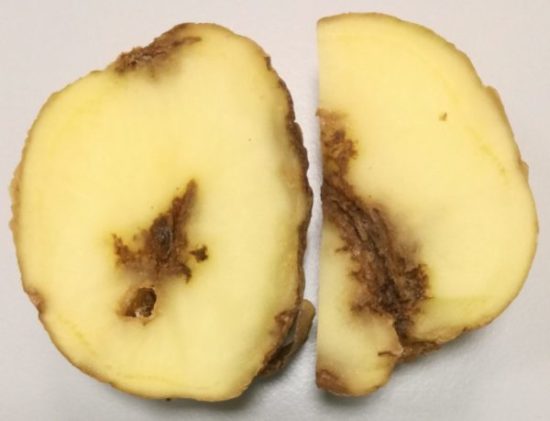
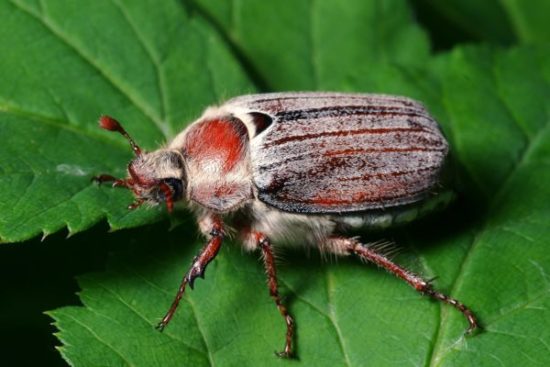
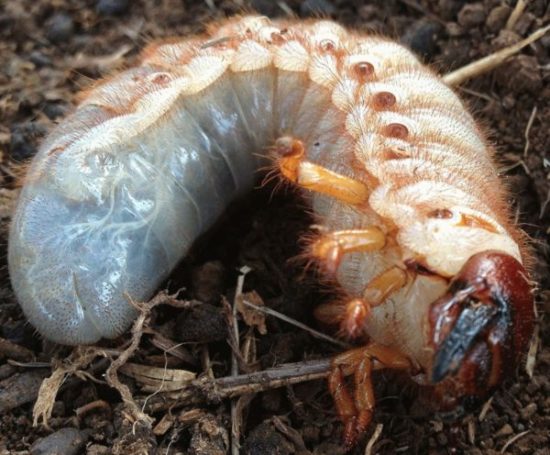
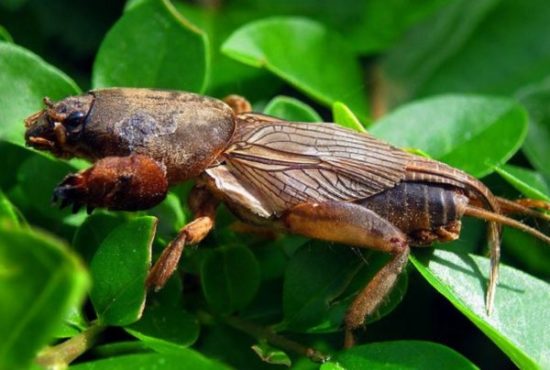
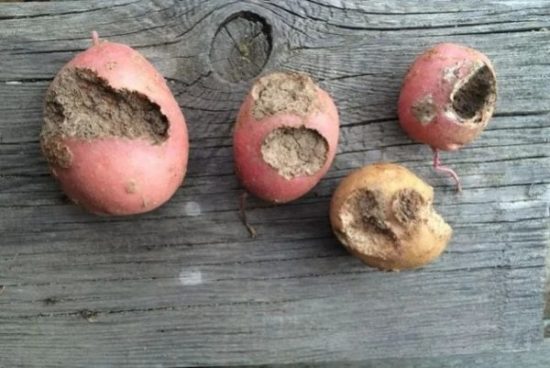
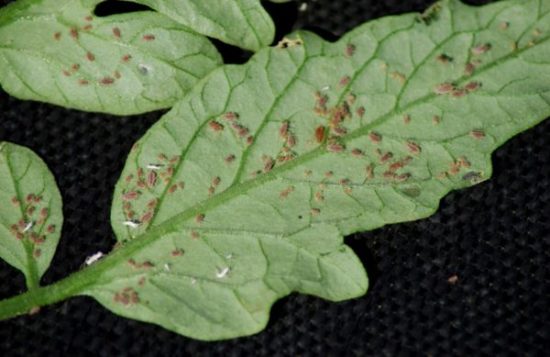

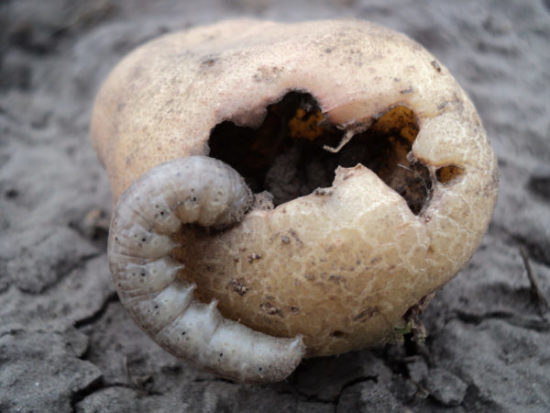
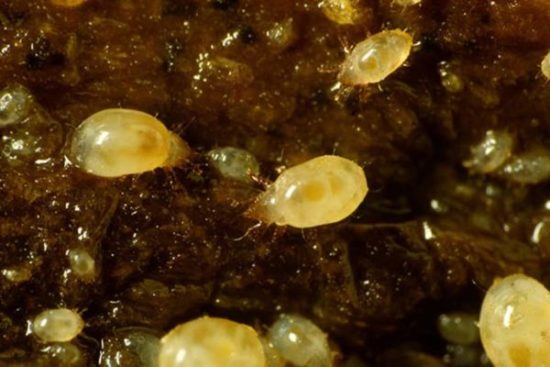
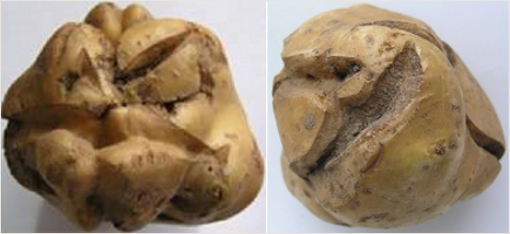
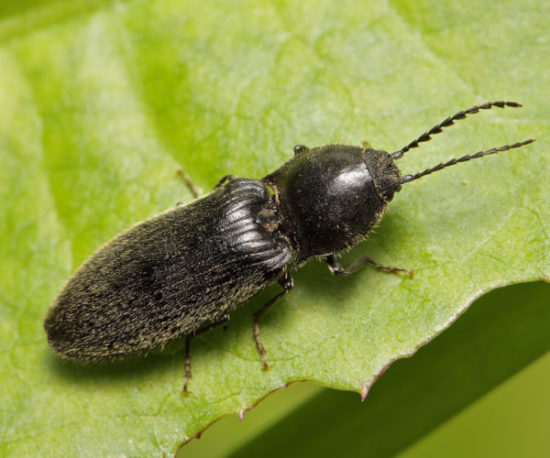
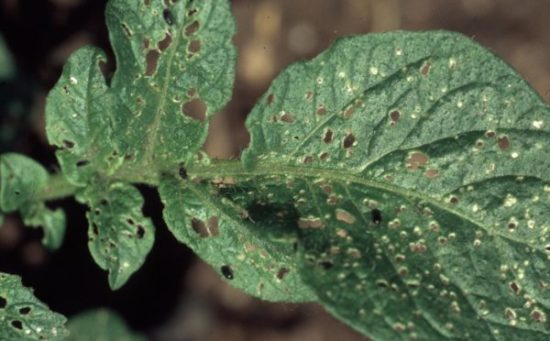



 CUCUMBERS NEVER GET SICK, I'VE BEEN USING ONLY THIS FOR 40 YEARS! I SHARE A SECRET WITH YOU, CUCUMBERS ARE LIKE THE PICTURE!
CUCUMBERS NEVER GET SICK, I'VE BEEN USING ONLY THIS FOR 40 YEARS! I SHARE A SECRET WITH YOU, CUCUMBERS ARE LIKE THE PICTURE! You can dig a bucket of potatoes from each bush. Do you think these are fairy tales? Watch the video
You can dig a bucket of potatoes from each bush. Do you think these are fairy tales? Watch the video
 How our fellow gardeners work in Korea. There is a lot to learn and just fun to watch.
How our fellow gardeners work in Korea. There is a lot to learn and just fun to watch. Eye trainer. The author claims that with daily viewing, vision is restored. They don't charge money for views.
Eye trainer. The author claims that with daily viewing, vision is restored. They don't charge money for views. A 3-ingredient cake recipe in 30 minutes is better than Napoleon. Simple and very tasty.
A 3-ingredient cake recipe in 30 minutes is better than Napoleon. Simple and very tasty. Therapeutic exercises for cervical osteochondrosis. A complete set of exercises.
Therapeutic exercises for cervical osteochondrosis. A complete set of exercises. Which indoor plants match your zodiac sign?
Which indoor plants match your zodiac sign? What about them? Excursion to German dachas.
What about them? Excursion to German dachas.